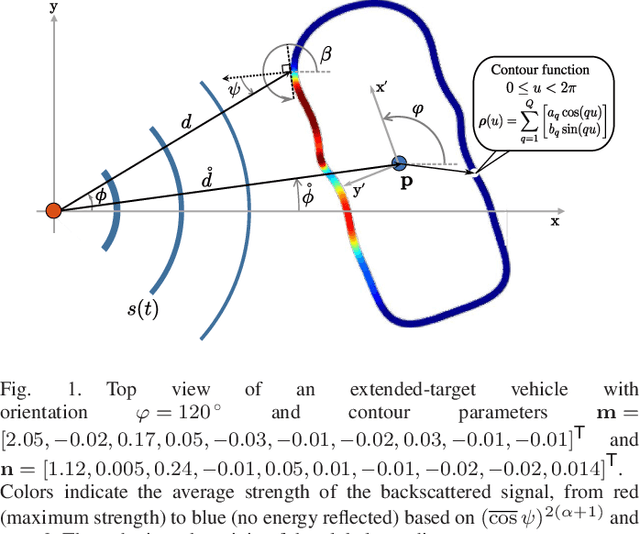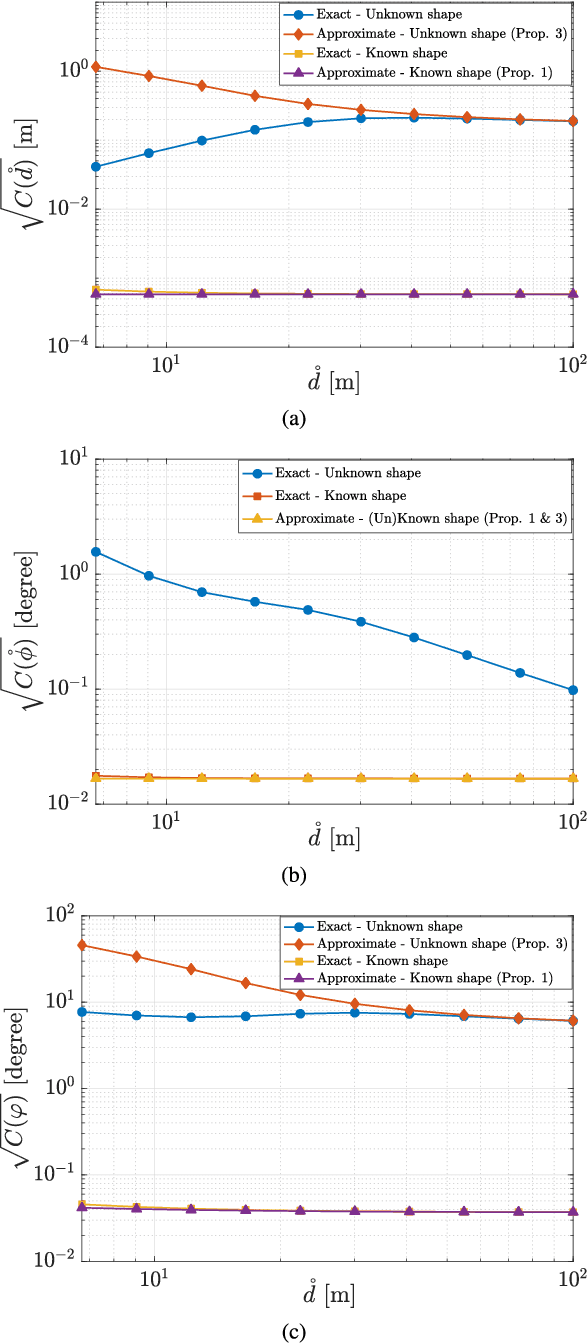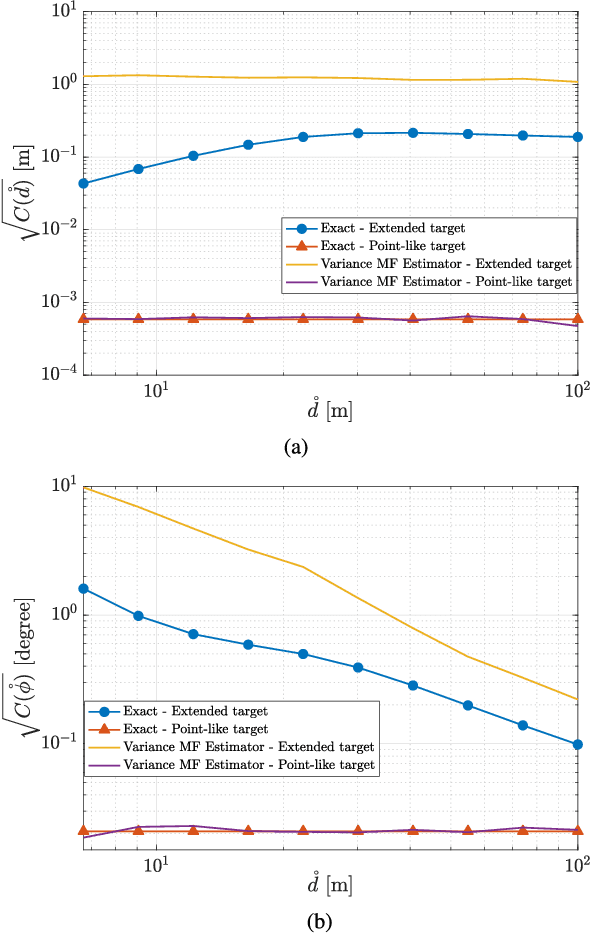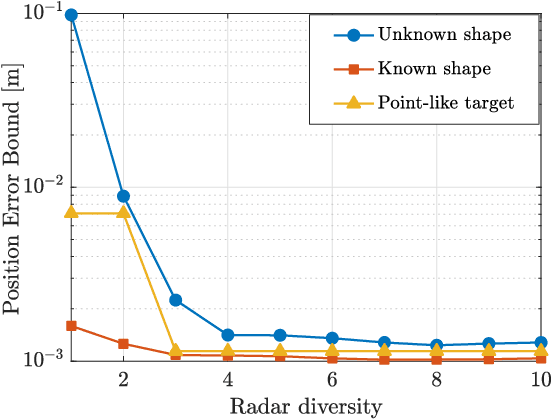Nil Garcia
Cramér-Rao Bound Analysis of Radars for Extended Vehicular Targets with Known and Unknown Shape
Jul 11, 2022



Abstract:Due to their shorter operating range and large bandwidth, automotive radars can resolve many reflections from their targets of interest, mainly vehicles. This calls for the use of extended-target models in place of simpler and more widely-adopted point-like target models. However, despite some preliminary work, the fundamental connection between the radar's accuracy as a function of the target vehicle state (range, orientation, shape) and radar properties remains largely unknown for extended targets. In this work, we first devise a mathematically tractable analytical model for a vehicle with arbitrary shape, modeled as an extended target parameterized by the center position, the orientation (heading) and the perimeter contour. We show that the derived expressions of the backscatter signal are tractable and correctly capture the effects of the extended-vehicle shape. Analytical derivations of the exact and approximate hybrid Cram\'er-Rao bounds for the position, orientation and contour are provided, which reveal connections with the case of point-like target and uncover the main dependencies with the received energy, bandwidth, and array size. The theoretical investigation is performed on the two different cases of known and unknown vehicle shape. Insightful simulation results are finally presented to validate the theoretical findings, including an analysis of the diversity effect of multiple radars sensing the extended target.
Achievable Information Rates for Nonlinear Fiber Communication via End-to-end Autoencoder Learning
Sep 17, 2018



Abstract:Machine learning is used to compute achievable information rates (AIRs) for a simplified fiber channel. The approach jointly optimizes the input distribution (constellation shaping) and the auxiliary channel distribution to compute AIRs without explicit channel knowledge in an end-to-end fashion.
 Add to Chrome
Add to Chrome Add to Firefox
Add to Firefox Add to Edge
Add to Edge